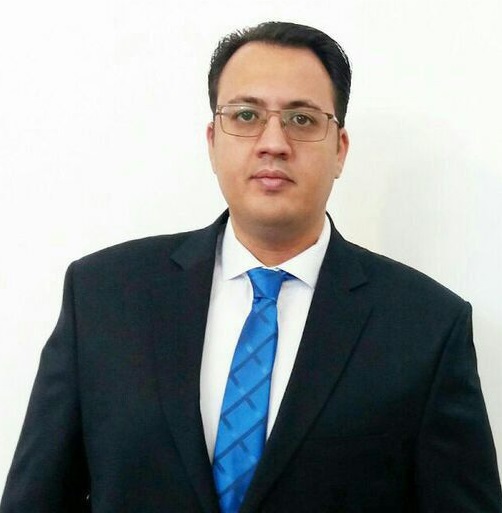PASSAGE 2 Nanotechnology Development and Uses
24 مرداد 1403 1403-05-24 9:58PASSAGE 2 Nanotechnology Development and Uses
READING PASSAGE 2
You should spend about 20 minutes on Questions 14-26 which are based on the Reading Passage below.
Nanotechnology Development and Uses
A Nanotechnology has been hailed by many as being a twentieth century miracle of science. Essentially, nanotechnology, a term derived from Greek, translating literally as ‘dwarf technology’ is, as the origin of its name suggests, engineering at the atomic level. Scientists work with particles of substances known as ‘nanoparticles’ which may measure no more than 1 nanometre or a billionth of a metre. That’s around 40,000 times smaller than the width of the average human hair. Whilst some of these substances derived from carbon compounds are manufactured, others, such as metals, are naturally-occurring or arise as a by-product of another process e.g. volcanic ash or smoke from wood burning. What makes these substances of such scientific interest is that their minute size facilitates medical and technological processes that would otherwise be impossible.
B It may be something of a revelation for many of us to learn that nanotechnology – or its concept – is far from cutting-edge science. In fact, nanotechnology as an idea was first referred to in an influential lecture by American physicist, Richard Feynman, as far back as 1959. During the lecture, entitled ‘There’s Plenty of Room at the Bottom’, Feynman outlined the basic concept of nanotechnology. Individual atoms and molecules, he claimed, could in the future be created by a physical process. Such a process, he envisaged, would involve the building of a set of precise tools to build and operate another proportionally smaller set. The building of increasingly minute tools at the microscopic level would in turn produce ultra-microscopic materials, later to become known as ‘nanoparticles’.
C Strangely, what should have sparked a scientific revolution was then virtually forgotten about for the next 15 years. In 1974, a Japanese scientist, Norio Taniguchi, of the Tokyo University of Science reintroduced Feynman’s theory and put a new name to an old concept, referring to the science as ‘nanotechnology’. However, it wasn’t until nearly a decade later, in the 1980s, that the way was paved for nanotechnology to leave the realm of theoretical science and become reality. Two major scientific developments within a relatively short period were to enable practical application of nanotechnology. The invention of the Scanning Tunnelling Microscope (STM), combined with the discovery of nano-sized particles termed ‘fullerenes’, were to prove a turning point in nanotechnology.
D Fullerenes are derived from carbon molecules and, in common with other nanoparticles, possess chemical and physical properties that are of huge scientific interest. The potential value of fullerenes for medical science was first raised in 2003 and in 2005 when the scientific magazine ‘Chemistry and Biology’ ran an article describing the use of fullerenes as light-activated antimicrobial agents. Since then, fullerenes have been used for several biomedical applications ranging from X-ray imaging to treating cancer by targeting cancer cells. In addition, these nanoparticles have been used in the manufacture of commercial products, from sunscreen to cosmetics and some food products. Furthermore, nanoparticles of metals, like gold and silver, have been used in environmental clean-ups of oil slicks and other forms of pollution. The remarkable properties of nanoparticles are down to two main factors: their greater surface-to-weight ratio, compared to larger particles which promotes the attachment of substances to their surface, and their minute size which allows them to penetrate cell membranes. These properties are of great benefit, for example in medicine, as drugs to fight cancer or AIDS can be attached to nanoparticles to reach their target cell in the human body.
E However, despite the amazing properties attributed to nanoparticles such as fullerenes, nanotechnology has yet to win wider universal acceptance in scientific circles. For the very properties that make nanoparticles so valuable to technology and medical science are also the ones that make them potentially so toxic. Such properties are potentially lethal if toxic substances attach themselves to the same nanoparticles, thereby delivering a fatal toxin through the cell membranes into the cells themselves. The toxic effect of these compounds is further increased, since their size permits them to enter the bloodstream and hence the body’s major organs. Furthermore, the nanoparticles in themselves are essentially a foreign element being introduced to the body. Unlike foreign elements, such as bacteria, the body has no natural immune system to deal with these ultramicroscopic particles. Scientists have yet to convince the nanotechnology sceptics that the potential side effects of nanoparticles are more than compensated for by the advantages that they confer. It may be, however, that opposition to this technology is no more than a general distrust of scientific innovation. In fact, Urban Wiesing from the University of Tubingen has been quoted as saying “Many of the risks associated with nanotechnology have at least been of the risks associated with nanotechnology have at least been encountered in part in other technologies as well.” He also believes that regulations can be put in place to minimise such risks. This is a view echoed by the Federal Environment Agency that proposes that such risks are vastly outweighed by the potential benefits of nanotechnology, in particular for the environment.
Questions 14-18
The text has five paragraphs, A-E.
Which paragraph contains the following information? Write the correct letter, A-E, in boxes 14-18 on your answer sheet.
14 promising beginnings
15 definition of a revolutionary technology
16 repackaging an old idea
17 dubious attributes
18 the foundation of a new technology
Questions 19 – 23
Choose the correct letter, A, B, C or D. Write your answers in boxes 19-23 on your answer sheet.
19 Nanotechnology
A has limited value.
B is not related to science.
C incites controversy.
D poses insurmountable safety issues.
20 In the beginning, nanotechnology was
A overlooked as a science.
B considered to be irrelevant.
C highly unpopular.
D regarded as being revolutionary.
21 Nanoparticles are a product of
A manufacturing processes alone.
B natural and manufacturing processes.
C purely biological processes.
D environmental factors alone.
22 Nanotechnology remained a purely theoretical science until
A other technologies caught up with it.
B scientists were better able to understand its practical applications.
C Taniguchi convinced other scientists of its practical value.
D a scientist invented a new technology.
23 Safety concerns about nanotechnology are
A completely unfounded.
B exaggerated by its detractors.
C real but manageable.
D misunderstood.
Questions 24-26
Complete the sentences. Choose NO MORE THAN THREE WORDS from the passage for each answer.
A major 24 …………. in the field of nanotechnology came with the discovery of fullerenes and the invention of the Scanning Tunnelling Microscope.
Amongst scientists, nanotechnology has not met with 25 …………..
The ability of nanoparticles to penetrate 26 …………. is somewhat of a mixed blessing.
14. D
Explanations: Paragraph D describes how the discovery of fullerenes led to promising applications in medicine, such as cancer treatment and environmental clean-ups, marking a significant and optimistic beginning in the use of nanotechnology.
15. A
Explanations: Paragraph A explains the definition of nanotechnology, describing it as a form of engineering at the atomic level with potential revolutionary implications.
16. C
Explanations: Paragraph C also discusses how Feynman’s original concept of nanotechnology was repackaged with a new name by Norio Taniguchi.
17. E
Explanations: Paragraph E discusses the concerns and potential dangers of nanoparticles, such as their toxicity and the risk they pose to the human body.
18. B
Explanations: Paragraph B talks about the foundational ideas of nanotechnology as presented by Richard Feynman in his 1959 lecture, laying the groundwork for future developments.
19. C
Explanations: In Paragraph E, it is discussed that despite its potential, nanotechnology has not yet gained universal acceptance, with concerns about its safety leading to controversy.
20. A
Explanations: Paragraph C mentions that the concept of nanotechnology was forgotten for 15 years after Feynman’s initial lecture.
21. B
Explanations: Paragraph A states that nanoparticles can be naturally occurring or manufactured, arising as a by-product of processes like volcanic ash or wood burning.
22. A
Explanations: Paragraph C explains that nanotechnology became practical after the invention of the Scanning Tunnelling Microscope and the discovery of fullerenes.
23. C
Explanations: Paragraph E addresses the genuine safety concerns regarding nanotechnology but also suggests that these concerns can be managed with regulations.
24. turning point
Explanations: Paragraph C mentions that a “turning point” in nanotechnology occurred with the discovery of fullerenes and the invention of the Scanning Tunnelling Microscope.
25. universal acceptance
Explanations: Paragraph E mentions that nanotechnology has “yet to win wider universal acceptance” among scientists.
26. cell membranes
Explanations: Paragraph D discusses how the ability of nanoparticles to penetrate “cell membranes” is both beneficial and potentially harmful.







